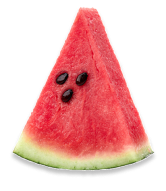Kava Bars in the United States: Sipping on Tradition in a Modern Setting
In the dim light of a cozy nook, nestled within the bustling streets of cities across the United States, a new kind of social ritual is taking root. Here, in these tranquil outposts known as Kava Bars, patrons aren't sipping on the typical espresso or craft beer. Instead, they're gathering around an earthy, peppery beverage that has made its way from the South Pacific to the States — Kava. This traditional drink, steeped in cultural significance, has given rise to a unique bar scene, one that emphasizes relaxation and community over the intoxicating effects of alcohol.
The Origins of Kava
To understand the allure of Kava Bars, it's essential to delve into the origins of Kava itself. Known scientifically as Piper Methysticum, Kava is a crop native to the western Pacific. The roots of this plant are ground to a paste and mixed with water, resulting in a muddy, bitter liquid that has been consumed for centuries in cultures throughout Polynesia, Micronesia, and Melanesia. Kava plays a vital role in social ceremonies and has been used traditionally for its sedative, anesthetic, and euphoriant properties — it's said to relax the mind without impairing mental clarity.
The Kava Bar Phenomenon
The traditional Kava-drinking ceremony has undergone a transformation as it has migrated to the West, particularly the United States. The first Kava bar in the US opened in the early 2000s, and since then, the trend has grown, with Kava bars popping up from coast to coast. These establishments range from the traditional, attempting to replicate the feel and ceremony of Pacific Island Kava culture, to the modern, blending the Kava experience with a more Westernized bar ambiance.
Kava Culture in the U.S.
Kava bars offer an alternative to the typical nightlife scene. Patrons of Kava bars often seek a place where they can relax and socialize without the pressure to consume alcohol. The effects of Kava are primarily calming; it's known to reduce anxiety and stress, making these bars a haven for those looking to unwind after a long day or week.
The ambiance of a Kava bar is typically mellow, with soft music and a laid-back vibe. The décor might include Pacific Island motifs, such as Tiki statues and bamboo accents, to pay homage to Kava's cultural roots. However, you might also find a Kava bar that blends in elements of a coffee shop or a cozy lounge, adapting to local tastes while maintaining the communal spirit central to Kava culture.
The Kava Experience
For those unfamiliar with Kava, the first experience can be surprising. Kava's taste is often described as earthy or peppery, and it can numb the tongue slightly due to its anesthetic properties. It's not a beverage chosen for its flavor but for its effects and the sense of camaraderie it fosters. Regulars often guide newcomers through the process, from the traditional clapping before a drink to the etiquette of the communal bowl.
In some Kava bars, the drink is prepared in the traditional method, where the root is pounded and strained by hand. In others, Kava comes in more accessible forms, such as pre-made beverages or even in combinations with other non-alcoholic flavors to make the taste more palatable.
The Health and Legal Aspect
One of the draws of Kava Bars is the perceived health benefits of Kava. Enthusiasts claim that Kava can alleviate anxiety, insomnia, and stress. While there is some scientific evidence to support these claims, it's important to note that Kava consumption isn't without risks. The U.S. Food and Drug Administration (FDA) has issued warnings about the potential for liver damage associated with Kava products, though such cases are rare and often linked to poor-quality Kava or excessive consumption.
Legally, Kava remains largely unregulated by the FDA, which means it's legal to consume and sell within the U.S. This legal status contributes to its popularity, allowing Kava Bars to operate much like any other specialty bar without the stringent licensing required for alcohol sales.
Kava Bars as Community Hubs
Beyond the beverage, Kava Bars serve as community hubs. With the absence of alcohol, the atmosphere encourages more meaningful conversations and connections. Some Kava Bars host events like open mic nights, live music, and cultural presentations that educate patrons about the traditions behind Kava.
Challenges and Controversies
Despite their popularity, Kava Bars are not without their challenges and controversies. The lack of regulation can lead to inconsistent quality, and there is still much the Western world is learning about Kava's long-term effects. Moreover, while many Kava bars strive to respect and honor the cultural heritage from which they draw, there are concerns about cultural appropriation and the commodification of Pacific Island traditions.
The Future of Kava Bars
As interest in wellness and alternative social settings continues to grow, the future looks bright for Kava Bars. They are increasingly becoming a part of urban culture, with some even offering delivery and online orders for their Kava products. The community aspect of Kava Bars, with their focus on wellbeing and socializing, seems to resonate with a wide audience, particularly among those who are sober-curious or abstaining from alcohol for health or personal reasons.
Conclusion
Kava bars in the United States are more than just a trend; they're a testament to the enduring human need for social connection and the appeal of cultural traditions. As they continue to spread and evolve, these establishments offer a unique venue for relaxation and community. Whether you're a Kava aficionado or a curious first-timer, a visit to a Kava bar offers a glimpse into a tradition that has traversed oceans and centuries to find its place in the modern American tapestry. As the Kava culture grows, it will be fascinating to see how it integrates into the wider social narrative and how it adapts while retaining its essence. Cheers to Kava — may its journey be as calming as its effects.

























































